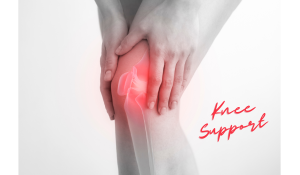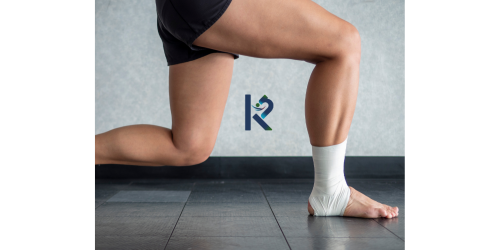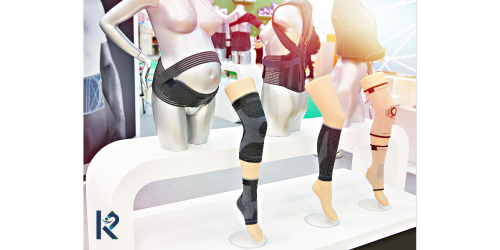Discover the benefits of using knee compression sleeves and how they can improve your performance and prevent injuries.
Understanding Knee Compression Sleeves
Knee compression sleeves are garments worn on the knee to provide support and stability. They are made of elastic materials that exert pressure on the knee joint and surrounding muscles.
These sleeves are designed to improve blood circulation, reduce swelling, and enhance proprioception. Proprioception refers to the body's ability to sense its position and movements. By enhancing proprioception, knee compression sleeves can help improve balance and coordination during physical activities.
Understanding how knee compression sleeves work is essential for using them effectively and reaping their benefits.
Benefits of Using Knee Compression Sleeves
Using knee compression sleeves can offer several benefits for athletes and individuals with knee issues. Here are some of the key advantages:
1. Pain Relief: Knee compression sleeves can help alleviate pain by providing support to the knee joint and reducing stress on the surrounding tissues.
2. Injury Prevention: By improving blood circulation and reducing swelling, knee compression sleeves can help prevent injuries such as strains, sprains, and tendonitis.
3. Enhanced Performance: The compression provided by knee sleeves can improve muscle efficiency and reduce muscle fatigue, leading to enhanced performance during physical activities.
4. Increased Stability: The added support and compression offered by knee sleeves can enhance joint stability, making them beneficial for individuals with weak or unstable knees.
5. Faster Recovery: Knee compression sleeves can aid in the recovery process by promoting blood flow and reducing swelling, allowing for faster healing of injuries.
By using knee compression sleeves, individuals can experience these benefits and improve their overall knee health and performance.
Different Types of Knee Compression Sleeves
There are various types of knee compression sleeves available, each designed to cater to different needs and preferences. Some common types include:
1. Neoprene Sleeves: Neoprene knee sleeves are popular for their excellent compression and heat retention properties. They provide good support and are suitable for individuals with mild to moderate knee issues.
2. Open Patella Sleeves: These knee sleeves have a hole or opening over the patella (kneecap) area. They offer targeted support to the patella while providing overall compression to the knee joint.
3. Closed Patella Sleeves: Closed patella sleeves cover the entire knee area without any openings. They offer uniform compression to the entire knee joint and are suitable for individuals with general knee discomfort or instability.
4. Dual Compression Sleeves: These sleeves provide compression not only to the knee joint but also to the muscles above and below the knee. They offer enhanced stability and support for individuals with more severe knee issues.
Choosing the right type of knee compression sleeve depends on individual needs, preferences, and the specific knee condition or injury.
Choosing the Right Knee Compression Sleeve for You
To choose the right knee compression sleeve for you, consider the following factors:
1. Level of Compression: Different knee sleeves offer varying levels of compression. Determine whether you need mild, moderate, or firm compression based on your knee condition and support requirements.
2. Material: Knee sleeves are commonly made of neoprene, nylon, or a combination of both. Consider the material's breathability, durability, and comfort.
3. Size and Fit: Ensure you measure your knee correctly and refer to the manufacturer's size chart to select the appropriate size. A well-fitting knee compression sleeve should provide a snug yet comfortable fit.
4. Additional Features: Some knee sleeves come with features like adjustable straps, silicone grippers, or moisture-wicking properties. Assess if these additional features are necessary for your specific needs.
By considering these factors, you can find a knee compression sleeve that suits your requirements and provides optimal support and comfort.
Potential Shortcomings of Knee Compression Sleeves
While knee compression sleeves offer numerous benefits, it's important to be aware of their potential shortcomings:
1. Limited Stability: Knee compression sleeves can provide some degree of stability but may not be sufficient for individuals with severe knee instability or significant ligament damage. In such cases, additional support from braces or orthotics may be necessary.
2. Allergic Reactions: Some individuals may be sensitive or allergic to the materials used in knee compression sleeves, such as neoprene. It's important to check for any allergic reactions and discontinue use if necessary.
3. Dependency: Relying solely on knee compression sleeves for knee support and stability may lead to muscle weakness over time. It's important to combine their use with appropriate strengthening exercises and rehabilitation programs.
4. Inappropriate Use: Using knee compression sleeves for prolonged periods or wearing them too tightly can restrict blood circulation and cause discomfort. It's important to follow the manufacturer's guidelines and consult a healthcare professional if needed.
By being aware of these potential shortcomings, individuals can use knee compression sleeves safely and effectively.




